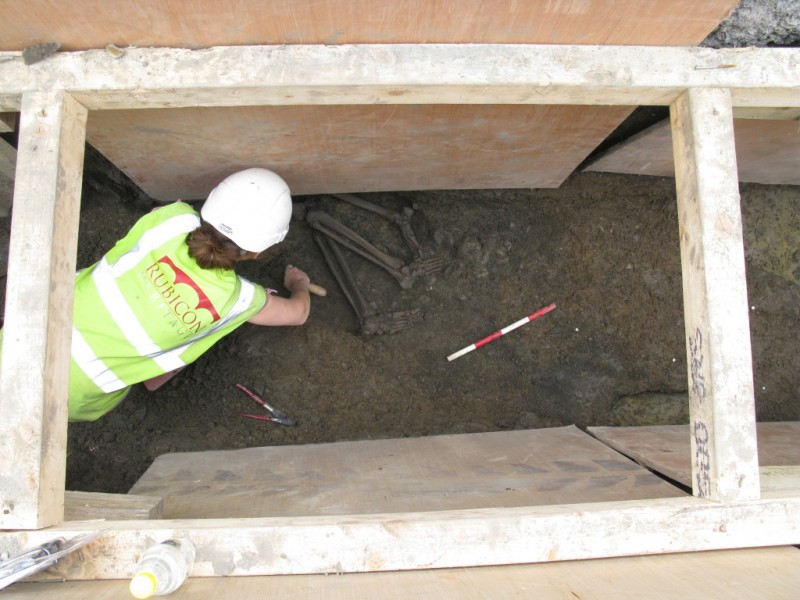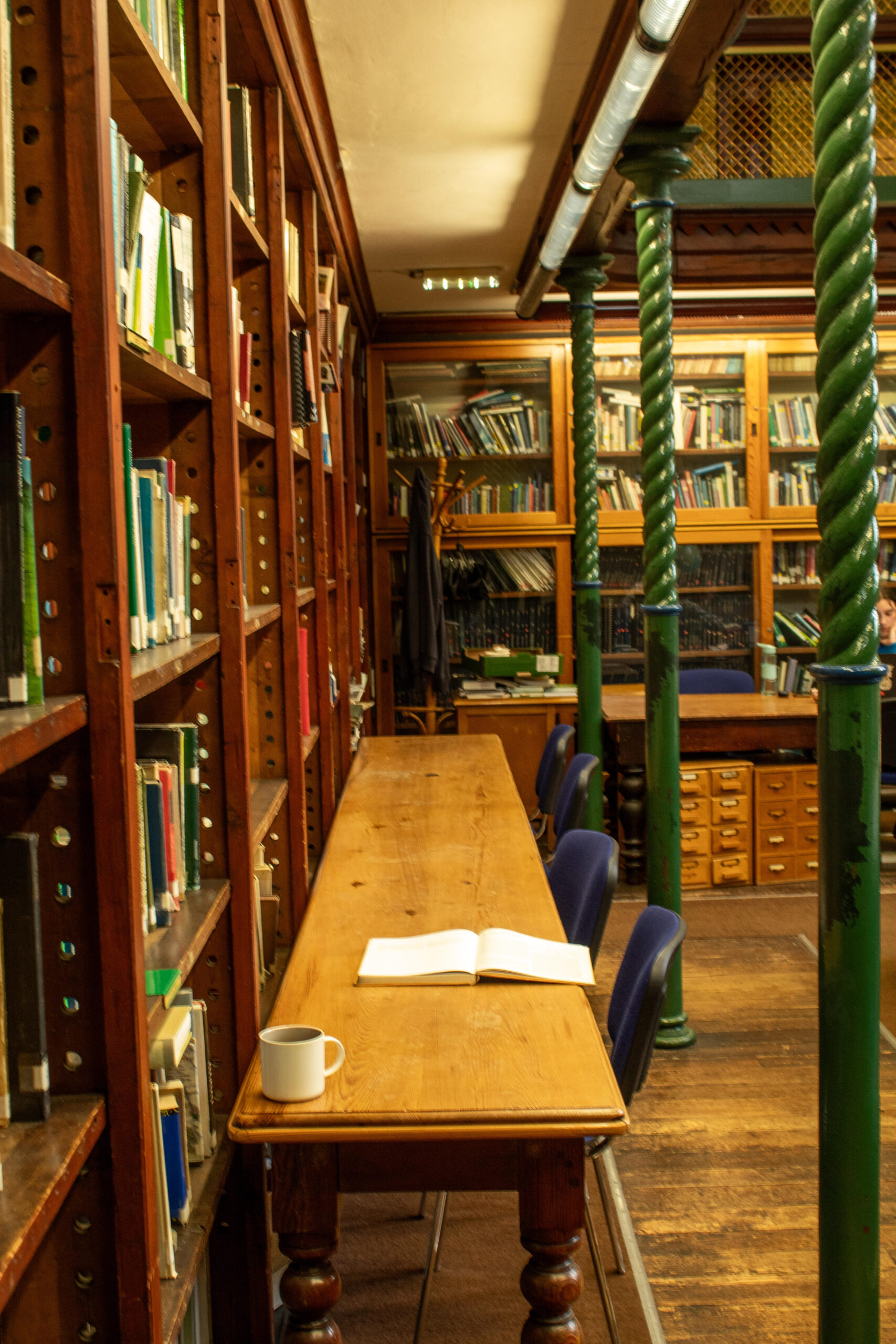Julia McConway | Contributing Writer
Trinity and its place in Dublin is an old and long story, one probably rarely reflected on by Trinity’s current citizens. Yet recent discoveries of human bones during local excavations in July cannot help but prompt one to reflect upon the many different aspects of Trinity’s lively past – next time you hurry absentmindedly through front arch, take a moment to marvel at the fact that we are still uncovering remains from civilizations long disappeared, only a few footsteps away.
It was there, during the ground excavations being carried out in July for the Luas Cross City project, that a team of archaeologists made a series of exciting discoveries. In a trench located directly in front of Trinity College, College Green, a number of human bones were uncovered. Dr. Maria Fitzgerald, project archaeologist for the Railway Procurement Agency – the company managing the Luas project – told The University Times that “The importance of the finds was recognised by the team on site … immediately.” It was not that unexpected though, Dr. Fitzgerald added, that a team of ten archaeologists from Rubicon Heritage Services have been supervising Luas works since January 2014, on behalf of the RPA.
Over the days following the initial discovery on July 16th up to five separate individuals in total were discovered in the trench. Carmelita Troy, a human bone specialist with Rubicon, confirmed that at least one of the skeletons was an adult male, while another was under the age of 18 at their time of death. Troy also provided advice on appropriate sampling and excavation techniques to be employed on-site. Dr. Fitzgerald of the RPA has further explained that “two of the five burials were on their side in a flexed position while one of the five was lain on its back with hands resting on the pelvis.”
The context in which the remains were found suggests that the bones originate from medieval times, or perhaps even earlier in date, given that the depth of 1.5 metres at which the bones were discovered is well below the known level of post-medieval activity. So what can be said about Trinity and its surrounding areas during this time frame? Can we piece together any idea of what life may have been like for these individuals?
It seems that the Trinity and College Green area in Medieval times was as much of a centre of activity as it is today. College Green only became known by this name early in the nineteenth century, long after the college’s establishment in 1592. Before this, the area was commonly known as Hoggen Green, with variations such as Hogges Green, Hog’s Green and Hogan’s Green. It is agreed that these various names would have sprung from the nearby convent, St. Mary del Hogges.
The convent of St. Mary del Hogges was built in the mid-twelfth century by the King of Leinster at the time, Dermot McMurrough, and it seems that over the years the open space beside it, Hoggen Green, developed into a central hub of activity. Hoggen Green was a site for all of the main public necessities of the era: the grazing of animals, various recreational activities such as archery and bowls, as well as entertainment in the form of public executions. One such example is the public burning of “Black” Adam O’Toole in the fourteenth century. One of the earliest recorded executions on the Green, he was executed for his claim that Holy Scriptures were nothing but fairy tales.
A slightly less conventional use of the Green seems to have been for the dumping of waste, both human and animal; this must have become a problem to the extent that an order was issued in the sixteenth century stating that “all dung that shall be carried to the said Hoggen Green shall be placed in the great hole by All Hallows.” Aforementioned great hole of excrement later became the site of our beloved Trinity College.
It is possible that these bodies are linked to a medieval cemetery, given the close proximity with both St. Mary del Hogges, and the Priory of All Hallows Abbey; however, the site director in College Green, Nikolah Gilligan, remarked at the time of discovery that “all bar one of the individuals were positioned in north-south oriented grave cuts, apparently with no grave goods present.” The north-south orientation of the grave-cuts contradicts the traditional method of Christian burial which would arrange the bodies in an east-west orientation. All the same, it is understood that during times of famine, plague or any other such hardship, these traditions would have been followed less stringently. Furthermore, Gilligan added that “the possibility that they are Viking cannot be discounted, given previously recorded Viking activity in the area.”
Indeed, Dublin can account for almost half of recorded Viking burials with weapons in the British Isles. In particular, this area of Dublin around the Poddle valley which contains Hoggen Green has been hugely significant in terms of discovered Viking remains, for the most part young men dating back to the 9th century. It was in the 9th century that Dublin became home to a large Viking longphort, essentially a base or type of fortress built up beside a river or tributary, from which raids of the surrounding countryside would be conducted.
Specifically, the burial mounds excavated at Hoggen Green in the 17th century revealed in one of the mounds an elaborate cist grave, while later in the 19th century further Viking graves were recorded along with various artefacts including four spearheads, two swords and a fragment of a shield.
However, for now it has been made clear that at this point in time, we can only speculate as to the origin of the skeletons. Dr. Fitzgerald explained that “although the excavation is now complete, most of the information on the burials will actually be gleaned from the detailed scientific analysis that will be undertaken in the post-excavation phase of assessment,” and that a human bone analysis will establish the life history of the individuals, providing information on their age, sex and health.
There are further plans for some of the teeth of the individuals to undergo isotope analysis, a technique which analyses the strontium, carbon and oxygen isotopes found in tooth enamel. Dr. Fitzgerald mentioned that this will provide “information on diet, water sources, and migration or geographic origins.” Whatever the results, it is hoped that they will lead to a better understanding of life in Dublin during either one of these eras, whether medieval or Viking. The archaeological monitoring of the ground excavations for the Cross City Luas project will be ongoing, and we can anticipate the publication of all results upon completion of the project. For now, we wait and wonder.







